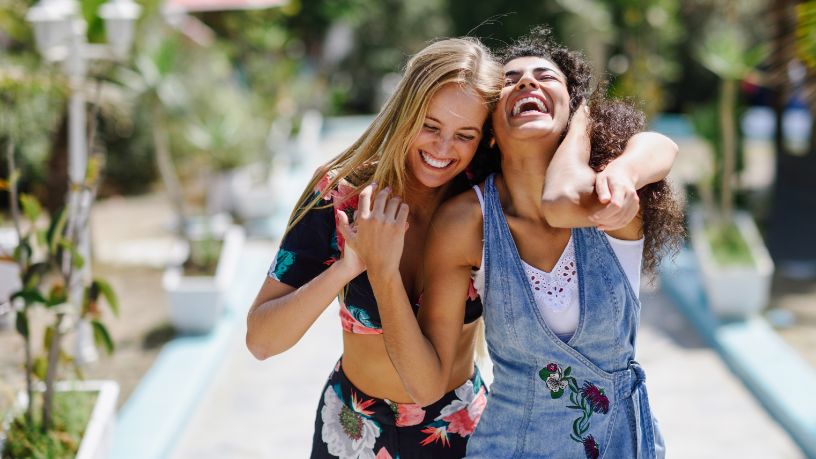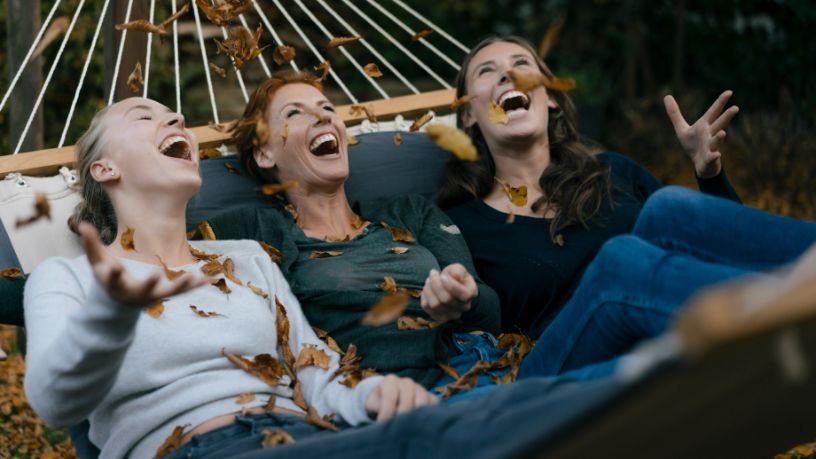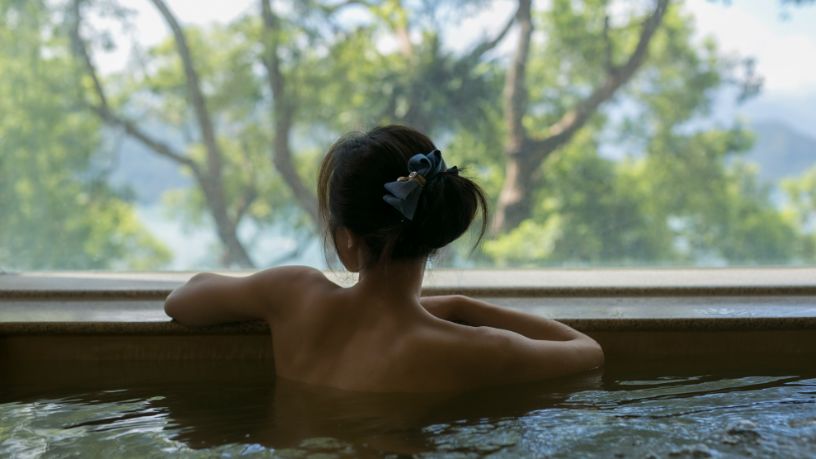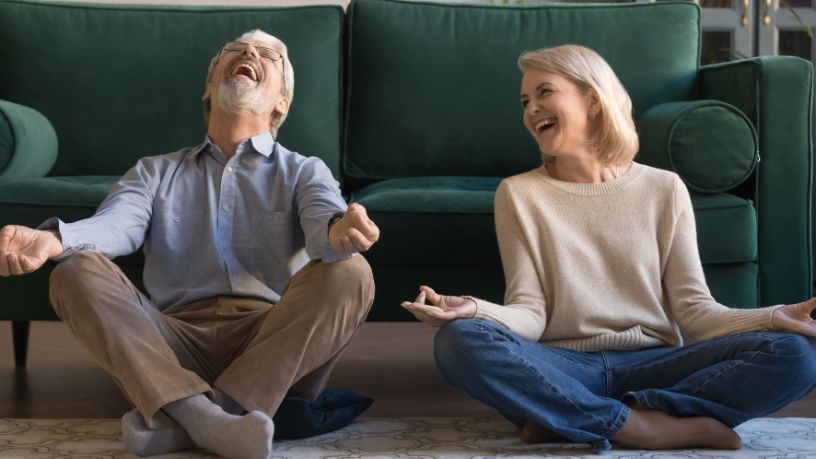Short breaks throughout the day can benefit your health, and 10 minutes is all you need to relax.
Key takeaways
It can be difficult to incorporate relaxation into a busy day, so using and practising specific techniques can help.
Kickstart your daily relaxation journey today with these 7 handy tips.
If you’re in a mad rush each morning, eat lunch at your desk most days and arrive home when the sun is setting most nights, fitting in self-care might seem impossible. But being under the pump is when your body and mind needs self-care the most.
The good news is, you don’t need to devote a lot of time to improve your wellbeing. In fact, 10 minutes a day may be all you need.
As one study demonstrates, a mere 10-minute walk in nature can improve your mental wellbeing.1 Another study even found that walking in nature is just as good as meditation to improve your mood.2
Likewise, just 10 minutes of stretching during work has been shown to reduce levels of anxiety and burnout.3
But how can you make these 10 minutes a part of your day? Here, we explore 7 quick relaxation techniques that can be incorporated into your routine.
1. Strike a pose
With well-established benefits,4 yoga combines physical postures, controlled breathing and meditation. If you’re short on time, learning a few basic moves, such as downward dog, can help you unwind in just 10 minutes.
2. Forward fold
While there are many yoga options that you can mix into your 10-minute relaxation routine, it may help to keep this one in your permanent toolbox.
The forward fold is a simple yoga technique that allows your head to go below your heart. Exhale as you bend forward from the hips, then bring your palms or fingertips to the floor (if you can), keeping your knees as straight as possible. Then, with each inhalation, lift and lengthen your front torso slightly. On each exhalation, release a little more fully into the forward bend.
The forward fold stretches your hamstrings, calves and hips, and is believed to help relieve fatigue and decrease stress.
3. Breathe out like a bee
Humming bee breathing (also known as Bhramari Pranayama) is a yogic practice that imitates the sound of a humming bee and is thought to help clear the mind, relieve stress and enhance memory and concentration.
Sit comfortably and plug both of your ears with your fingers. Then close your eyes and relax your body. Keep your upper and lower teeth apart and your mouth closed. Breathe in slowly and deeply, and then breathe out while making a humming ‘bee’ sound.
4. Stand tall
Sometimes, managing stress is as simple as standing or sitting up straight. Good posture can help you take in oxygen more easily,5 which can help calm you.6
Either sitting or standing, adjust your posture, making sure your shoulders are pulled back, your spine is straight and the crown of your head is held high with your chin drawn inward. Do this periodically throughout the day to avoid slumping at your desk.
5. Body scan
Body scanning helps you tune in to the different sensations in your body, while breathing in and out slowly and deeply. It’s a great way to relax during the day, and it can also help you fall asleep more quickly at night.
Lie on your back with your eyes closed, arms and legs spread out and palms facing upwards. Relax your body with an awareness of your chest and abdomen rising and falling with each breath. ‘Scan’ your body for any muscular tension, and consciously release it with each breath.
6. Meditate
Research suggests that meditation can help reduce stress, enhance relaxation and improve overall wellbeing.7 And the good news is that meditation doesn’t have to be time consuming. You can relax and reduce stress in 10 minutes or less, and there are lots of different guided meditations to try out.
7. Progressive muscle relaxation
Progressive muscle relaxation is a great way to target tension in your body, as it allows you to release specific muscle groups one at a time.
The technique involves a cycle of tensing and releasing muscles. Start from your toes and work your way up to your face, tensing muscle groups for 5 to 10 seconds then releasing. For example, you can tighten the muscles in your calves by flexing your feet towards your knees, holding, then releasing back down.
Remember, when it comes to any new wellness regime, consistency is key. Practise these techniques regularly and get ready to reap the rewards!

At Bupa, trust is everything
Our health and wellbeing information is regularly reviewed and maintained by a team of healthcare experts, to ensure its relevancy and accuracy. Everyone's health journey is unique and health outcomes vary from person to person.
This content is not a replacement for personalised and specific medical, healthcare, or other professional advice. If you have concerns about your health, see your doctor or other health professional.
1Meredith, G. R., Rakow D.R., Eldermire E. R. B., Madsen C. G., Shelley S. P., & Sachs, N. A. (2020). Minimum Time Dose in Nature to Positively Impact the Mental Health of College-Aged Students, and How to Measure It: A Scoping Review. Frontiers in Psychology, 10, 2942.
2Edwards, M. K., & Loprinzi, P. D. (2018). Experimental effects of brief, single bouts of walking and meditation on mood profile in young adults. Health promotion perspectives, 8(3), 171-178.
3Montero-Marin J., Asun S., Estrada-Marcen, N., Romero R., & Asun R. (2013). Effectiveness of a stretching program on anxiety levels of workers in a logistic platform: a randomized controlled study. Atencion primaria, 45(7), 376-383.
4National Center for Complementary and Integrative Health Yoga. (2023). Yoga: What You Need to Know. National Institutes of Health.
5Katz, S., Arish, N., Rokach, A. et al. (2018). The effect of body position on pulmonary function: a systematic review. BMC Pulmonary Medicine, 18, 159.
6Better Health Channel. (2015). Breathing to reduce stress. Victoria State Government, Department of Health.
7Toussaint, L., Nguyen, Q.A., Roettger, C., et al. (2021). Effectiveness of Progressive Muscle Relaxation, Deep Breathing, and Guided Imagery in Promoting Psychological and Physiological States of Relaxation. Evidence-based complementary and alternative medicine, 5924040.
You might also like...
Kath Ebbs: 5 self-care tips for your mental health
When it comes to your mental health, it’s important to have a solid self-care routine. Check out Kath Ebbs’ top 5 tips for getting yours on track.
Wintering: 4 rituals for the cooler months
Staying healthy and happy in the cooler months may be easier (and more restful) than you think. Check out 4 tips for doing winter well.
Are hot springs good for you?
You may have spent time soaking in thermal waters, but does the practise actually have any health benefits? Find out if hot springs are really good for you.
Breathing exercises to reduce stress and anxiety
Discover easy breathing exercises to reduce stress and anxiety. Mindful breathwork can help calm your mind, boost focus, and support mental wellbeing.





